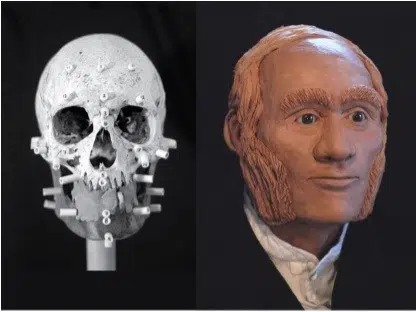Lakehead University is playing a key role identifying one of the victims of the failed Franklin Expedition.
Stephen Fratpietro is the Technical Manager at the university’s Paleo-DNA Laboratory, and explains the lab used samples from a living family member to identify Warrant Officer John Gregory, engineer aboard HMS Erebus.
In 1845, British explorer Sir John Franklin attempted to chart the Northwest Passage with 129 sailors on two ships, Erebus and Terror. In 1848, 105 remaining crew attempted to escape after their ships became stuck in the ice, but none would survive.
The remains of the officer were found on King William Island, Nunavut. “We now know that John Gregory was one of three expedition personnel who died at this particular site, located at Erebus Bay on the southwest shore of King William Island,” says Douglas Stenton, adjunct professor of anthropology at Waterloo and co-author of a new paper about the discovery.
The lab analyzed two types of DNA that are passed down through generations without changing, one from an individual’s mother and one from the father’s side. They gathered samples from 18 people who could trace their family tree back to a member of the crew.
“The last couple of people that had donated their DNA, we finally discovered that we had found our first match, and this particular individual, the living descendant, we could trace their DNA back to a[n ancestor] by the name of John Gregory,” he explains.
“Having John Gregory’s remains being the first to be identified via genetic analysis is an incredible day for our family, as well as all those interested in the ill-fated Franklin expedition,” reads a statement from Gregory’s great-great-great grandson Jonathan Gregory of Port Elizabeth, South Africa.
Fratpietro adds this has been in the works since tooth and bone samples were recovered in 2013, and is a joint project with Trent University and the University of Waterloo.
He says they hope this inspires more of the crew’s descendent to come forward to help the lab identify the other sets of remains.



